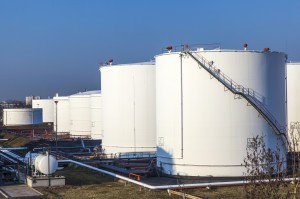 Natural gas fell for a third day in early European trading on Friday as forecasts for cooler Canadian weather systems to infiltrate the north-eastern US next week offset a bullish inventory report by the EIA and short-term forecasts for very warm weather.
Natural gas fell for a third day in early European trading on Friday as forecasts for cooler Canadian weather systems to infiltrate the north-eastern US next week offset a bullish inventory report by the EIA and short-term forecasts for very warm weather.
Natural gas for delivery in July traded 0.22% lower at $2.771 per million British thermal units at 08:13 GMT, shifting in a daily range of $2.788 – $2.762. The contract fell 2.7% on Thursday to $2.777 and has trimmed its weekly advance to only 0.7% so far.
The Energy Information Administration reported yesterday that US natural gas stockpiles rose by 89 billion cubic feet in the week ended June 18th, below analysts median forecasts for 93 bcf and only slightly above the five-year average build for the week of 87 bcf. Stockpiles rose by 112 bcf a year ago.
Total gas held in US storage hubs amounted to 2.433 trillion cubic feet, marking a surplus of 46 bcf, or 1.9%, over the five-year average supplies of 2.387 trillion. Stockpiles were also at a surplus of 42.9% to the year-ago level at 1.703 trillion.
However, the bullish reading was overshadowed by weather data towards the end of the month finally turning more definitive, and bearish. Canadian weather systems will track into the north-central US at the end of next week, bringing a cooling across much of the northern and eastern US and pushing temperatures down to seasonal levels, or a few degrees lower, especially over the Midwest and Northeast. The focus thereafter will be whether high pressure will strengthen in early July, or additional Canadian weather systems will follow and extend the bearish pattern.
Until then, however, very warm to hot temperatures will cover most of the US, pushing national natural gas demand to high compared to normal. The remnants of once tropical storm Bill will bring heavy rains and cooler temperatures today and tomorrow over the southern Great Lakes and Ohio Valley, while the Southeast, including Florida, and the West will drive strong cooling demand amid highs in the 90s to 100 degrees Fahrenheit.
Temperatures across most of the country will become very warm to hot this weekend and through next week, including over the northern US, driving strong short-term cooling demand for natural gas, before the aforementioned Canadian weather systems track across the border as the 8-14 day outlook progresses.
June 25ths inventory report will likely be below normal due to this weeks widespread warmth, sounding a bullish note, with early projections pointing to an inventory build of around 77 bcf for the week ended June 19th, compared to the five-year average gain of 86 bcf and the year-ago one of 110 bcf. The following reports, however, are expected to trend higher as cooler conditions chew into cooling demand.
Readings
According to AccuWeather.com, the high in New York on June 20th will be 85 degrees Fahrenheit, 4 above normal, with highs set to range between the mid 70s and mid 80s through the end of the month. Chicago will fail to exceed 70 degrees today, 11 below usual, before jumping to the low-mid 80s afterwards.
Down South, readings in Houston will max out at the seasonal 90 degrees today, and will remain within a 2-3-degree range through the rest of the month. On the West Coast, Los Angeles will peak at 83 degrees today, 4 above usual, and will reach 87 degrees on June 22nd.
Pivot points
According to Binary Tribune’s daily analysis, July natural gas futures’ central pivot point stands at $2.810. In case the contract penetrates the first resistance level at $2.849 per million British thermal units, it will encounter next resistance at $2.920. If breached, upside movement may attempt to advance to $2.959 per mBtu.
If the energy source drops below its S1 level at $2.739 per mBtu, it will next see support at $2.700. In case the second key support zone is breached, the power-station fuel’s downward movement may extend to $2.629 per mBtu.
In weekly terms, the central pivot point is at $2.765. The three key resistance levels are as follows: R1 – $2.907, R2 – $3.063, R3 – $3.205. The three key support levels are: S1 – $2.609, S2 – $2.467, S3 – $2.311.





